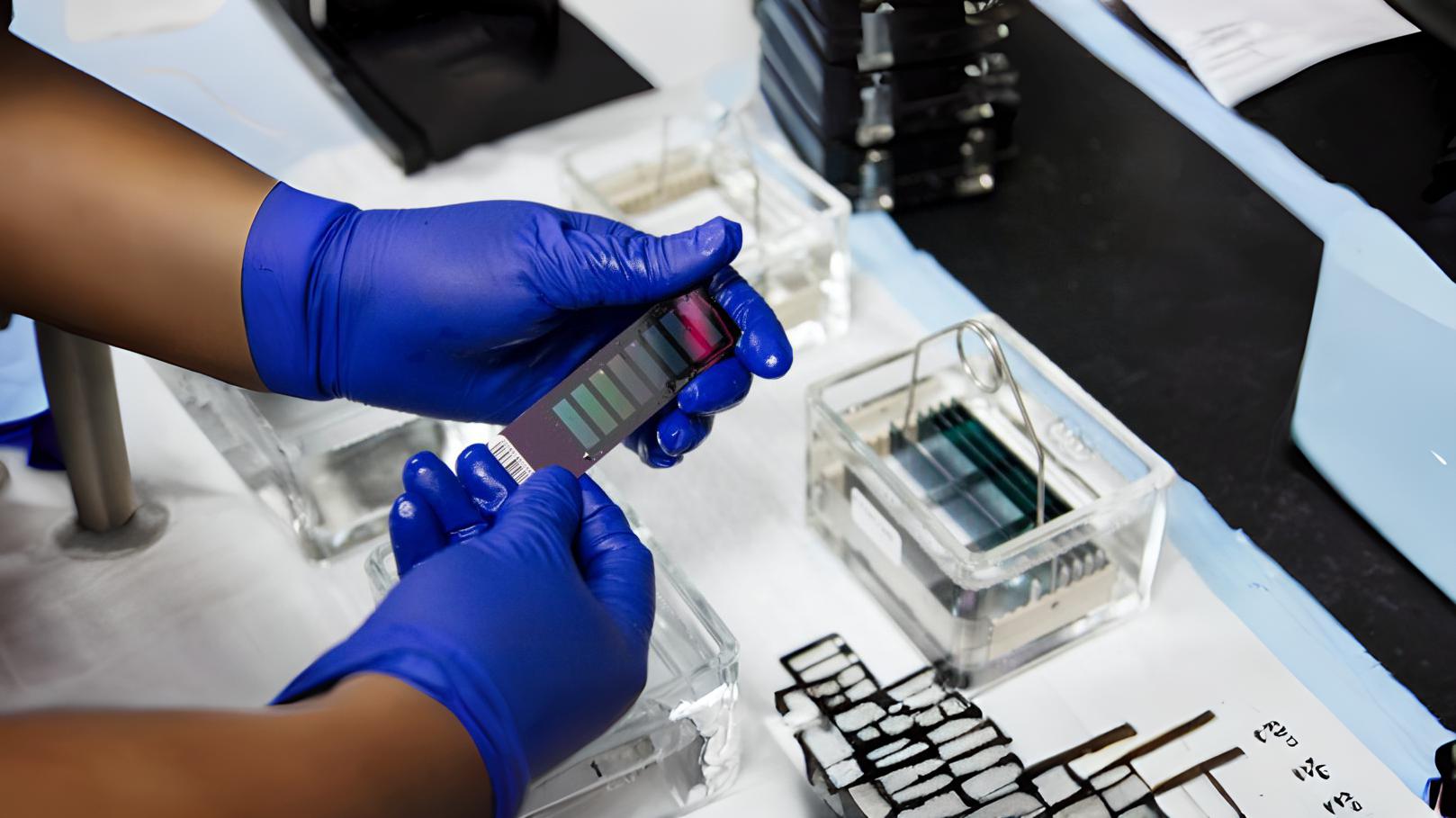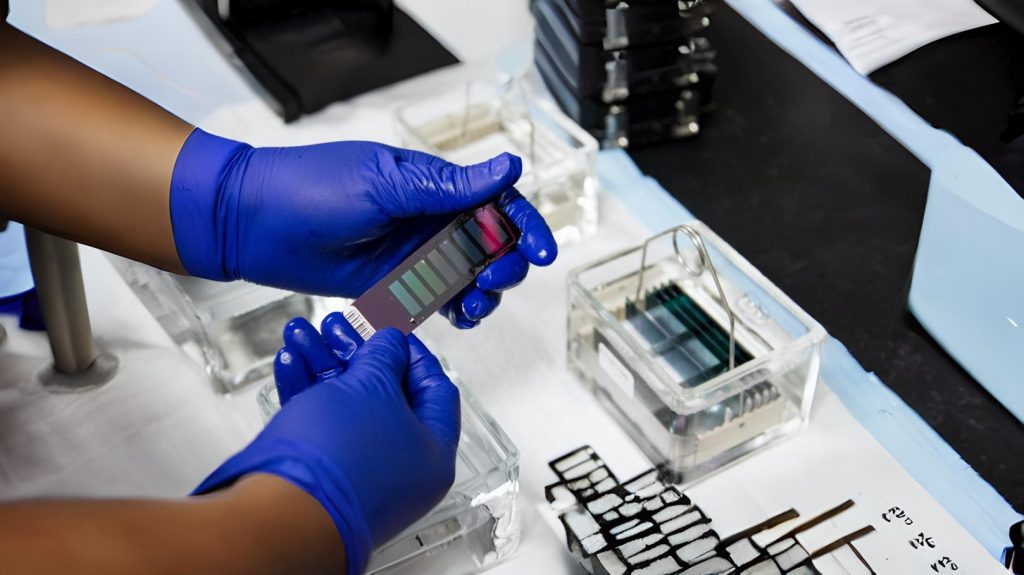The Latest Developments in Precision Oncology
 5 years ago
By Charlotte Di Salvo
5 years ago
By Charlotte Di Salvo

Precision medicine is a rapidly growing therapeutic area within oncology. Technological innovations have contributed to the refinement of predictive and diagnostic techniques used to tailor therapy for cancer patients. The goal is to not only develop more precise treatments, but to also predict the optimum choice of therapy to maximise the chance of progression free survival.
For daily articles on the latest pharma trends and innovations, as well as interviews with leading experts and in-depth industry White Papers, subscribe to PharmaFeatures.com.
Deep learning for diagnostics
Deep learning is a specialised area of ML that attempts to model abstraction from large-scale data using multi-layered deep neural networks (DNNs). Abstraction refers to the process of filtering out irrelevant data in order to focus on the desired information. Cancer diagnosis relies upon accurate visual pattern recognition in images and large data sets in order to identify features that cause concern. While oncology physicians are highly specialised and trained in their field, there is only so much data processing that the human brain can handle. Machine learning on the other hand can be programmed to identify abnormalities in vast data sets with greater accuracy land speed than the average human.
Deep learning has been used for image classification in cancer diagnosis. Such image tasks require a form of deep learning known as a convolutional neural network (CNN). This artificial neural network relies on many layers composed of connected artificial neurons that perform mathematical operations on input data. One of the main reasons why CNN works well for image classification is the ability of the network to mimic the natural visual processing of the human brain “which enables the interpretation of dense information such as the relationship of nearby pixels and objects”.
During training, labeled image data is inputted into the artificial neural network and undergoes two processes, known as filtering and sub-sampling. These processes enable the network to learn the image features. Labelled image data may comprise images of skin lesions with cancerous features identified. Once a model is trained, it is validated in an independent rest in order to evaluate its final performance.
In 2020, a study published in Nature Research used deep learned tissue “fingerprints” to classify breast cancers. One of the challenges of using deep learning for histopathology was noted in the study as the lack of large, well-annotated data sets required for the algorithms to learn statistical significance. After training the algorithm, they used “the features the network learned, called ‘fingerprints,’ to predict ER, PR, and Her2 status in two datasets”. While the dataset for the study was small, the fact that the fingerprints determined different growth factor status from whole slide images of breast cancer. This supported the potential of using ML in cancer diagnosis.
Next-generation sequencing
Next-generation sequencing (NGS) is a DNA-sequencing technique used for high-throughput tumour profiling. With the ability to sequence the entire human genome in a day, NGS offers a significant advantage over traditional genomic sequencing like the Sanger sequencing. According to a recent review, NGS comprises of the following steps:
• Each DNA fragment to be sequenced is bound to a structure called array, followed by the enzyme DNA polymerase which adds labeled nucleotides sequentially.
• A high-resolution camera captures the signal from each nucleotide as it becomes integrated and notes the spatial coordinates and time.
• The sequence at each spot can then be inferred by a computer program to generate a contiguous DNA sequence, referred to as a read.
NGS is an important part of genetic sequencing within a diagnostic technique known as liquid biopsy. Liquid biopsy is a non-invasive and real-time monitoring of disease development, which can be applied to all stages within cancer diagnosis and treatment. Liquid biopsy measures the presence of circulating tumour DNA (ctDNA). cTDNA is a type of cancer biomarker used to detect the disease as well as monitor the progress throughout treatment.
NGS is used in conjunction with liquid biopsies to provide a tumour-specific molecular profile of the cancer. Initially PCR-based methods were used to sequence ctDNA due to their sensitivity and low cost. However, these methods can only screen for known variants, and the input and speed are limited. NGS has shown to provide high throughput and the ability to screen unknown genetic variants. Thanks to NGS technology, the sequencing of ctDNA can be performed at a much higher sensitivity than tissue biopsies and support patients in targeted therapy relative to their tumour profile.
Microsatellite instability testing
The DNA mismatch repair system (MMR) is a highly conserved repair mechanism for cellular function. However, when the MMR system fails to work properly, it can cause microsatellites. These are regions of repeated DNA that change in length, showing instability. Lynch syndrome is a common hereditary disease, characterised by mutations in MMR genes. This syndrome is associated with many cancer types, especially so with colon cancer and endometrial cancer.
MSI testing is used to analyse the length of specific DNA microsatellites within a tumour sample in order to measure the level of instability.
Clinical studies in the last five years suggest that MSI is a predictive biomarker for immunotherapy, seeking further attention for its application in precision medicine. According to a 2019 review, several clinical trials have demonstrated that mismatch repair deficiency or microsatellite instability-high is significantly associated with long-term immunotherapy-related responses and better prognosis in colorectal and noncolorectal malignancies treated with immune checkpoint inhibitors.
At the time of publication (2019), the drug pembrolizumab has been approved for MMR deficiency/microsatellite instability-high refractory tumours, and nivolumab approved for colorectal cancer patients with MMR deficiency / microsatellite instability-high. The fact that the same biomarker has been used to support immunotherapy for different tumour types is a first in cancer research. This represents a significant step forward in precision oncology, highlighting a promising opportunity to improve the efficacy of immunotherapy.
The three innovations described in this article are a few of the latest developments in precision oncology. As research continues, the hope is that cancer therapy will become more targeted so treatment is more effective and patients receive the best chance of survival.
To discuss these topics further with sector experts, and to ensure you remain up-to-date on the latest in clinical development, sign up for Proventa International’s Oncology Strategy Meeting, set for 17 June 2021.
Charlotte Di Salvo, Junior Medical Writer
Proventa International

Navigating the Complex World of Global Regulatory Affairs in Oncology
In today's fast-paced global pharmaceutical landscape, the regulatory affairs sector plays a pivotal role in ensuring the safety, efficacy, and market access of oncology drugs. As the demand for innovative cancer therapies continues to grow, understanding the intricacies of global...
2 years agoNavigating the Complex World of Global Regulatory Affairs in Oncology
In today's fast-paced global pharmaceutical landscape, the regulatory affairs sector plays a pivotal role in ensuring the safety, efficacy, and market access of oncology drugs. As the demand for innovative cancer therapies continues to grow, understanding the intricacies of global...
2 years ago
Overcoming the Hurdles: Navigating the Challenges in Oncology Clinical Trials
In the world of medical research, oncology clinical trials are at the forefront of innovation and discovery. These trials play a crucial role in advancing our understanding of cancer and developing more effective treatments. However, the path to successful oncology...
2 years agoOvercoming the Hurdles: Navigating the Challenges in Oncology Clinical Trials
In the world of medical research, oncology clinical trials are at the forefront of innovation and discovery. These trials play a crucial role in advancing our understanding of cancer and developing more effective treatments. However, the path to successful oncology...
2 years ago
Embracing a Patient-Centric Approach in Oncology Trials
In the realm of healthcare and medical research, the term "patient-centric" has gained significant traction in recent years. This shift in focus towards prioritizing patients' needs and preferences is not only transforming the healthcare industry but is also making waves...
2 years agoEmbracing a Patient-Centric Approach in Oncology Trials
In the realm of healthcare and medical research, the term "patient-centric" has gained significant traction in recent years. This shift in focus towards prioritizing patients' needs and preferences is not only transforming the healthcare industry but is also making waves...
2 years ago